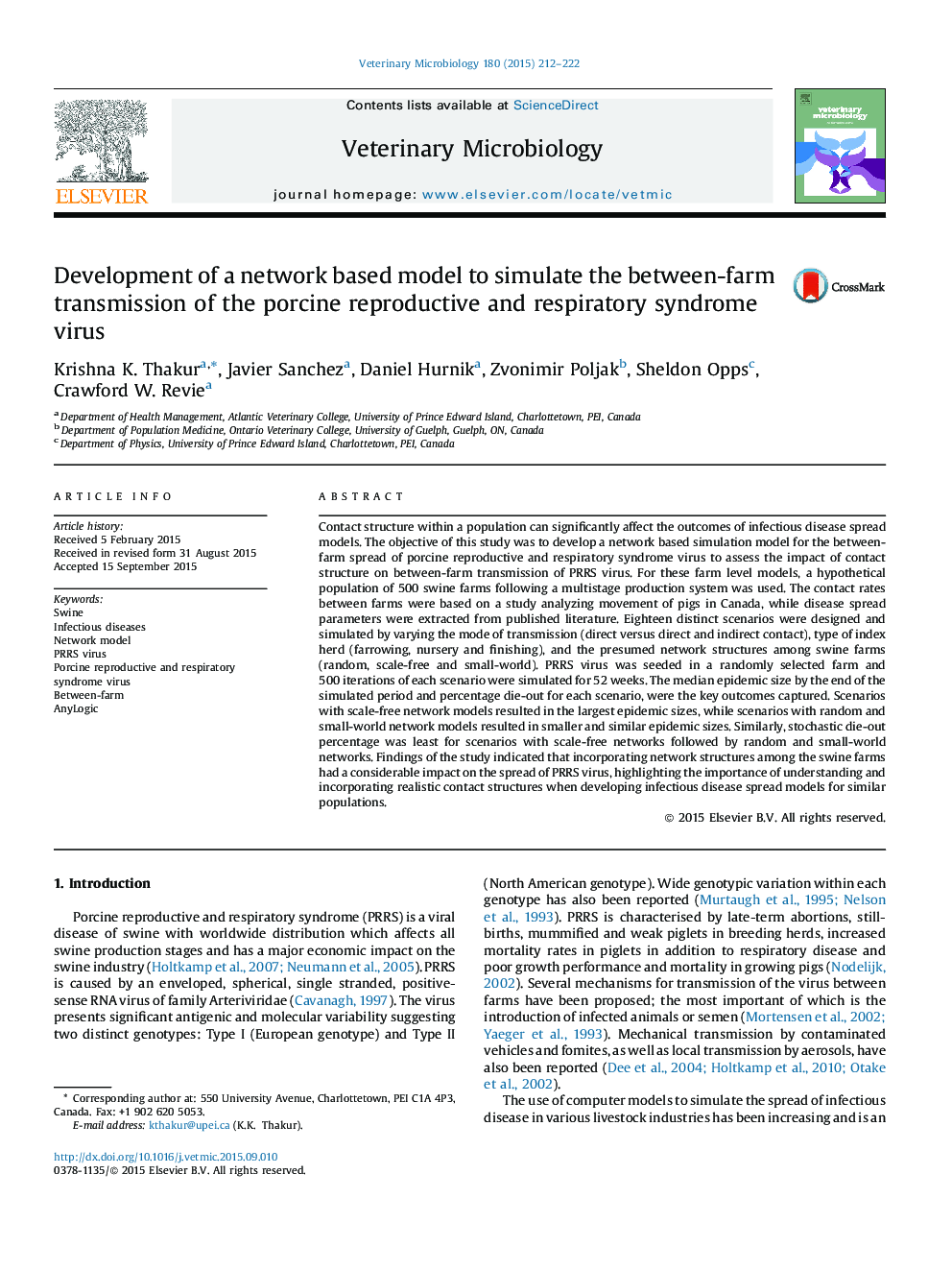| کد مقاله | کد نشریه | سال انتشار | مقاله انگلیسی | نسخه تمام متن |
|---|---|---|---|---|
| 5799809 | 1555344 | 2015 | 11 صفحه PDF | دانلود رایگان |
- Simulated between-farm spread of PRRSV using contact structure of farms in canada.
- Mechanism for spread: animal movement and sharing of trucks between farms.
- Evaluated the impact of perceived network structures on the virus spread.
- Described the likely pattern of epidemics for a number of simulated scenarios.
- Highlighted the relative importance of direct and indirect contacts on PRRSV spread.
Contact structure within a population can significantly affect the outcomes of infectious disease spread models. The objective of this study was to develop a network based simulation model for the between-farm spread of porcine reproductive and respiratory syndrome virus to assess the impact of contact structure on between-farm transmission of PRRS virus. For these farm level models, a hypothetical population of 500 swine farms following a multistage production system was used. The contact rates between farms were based on a study analyzing movement of pigs in Canada, while disease spread parameters were extracted from published literature. Eighteen distinct scenarios were designed and simulated by varying the mode of transmission (direct versus direct and indirect contact), type of index herd (farrowing, nursery and finishing), and the presumed network structures among swine farms (random, scale-free and small-world). PRRS virus was seeded in a randomly selected farm and 500 iterations of each scenario were simulated for 52 weeks. The median epidemic size by the end of the simulated period and percentage die-out for each scenario, were the key outcomes captured. Scenarios with scale-free network models resulted in the largest epidemic sizes, while scenarios with random and small-world network models resulted in smaller and similar epidemic sizes. Similarly, stochastic die-out percentage was least for scenarios with scale-free networks followed by random and small-world networks. Findings of the study indicated that incorporating network structures among the swine farms had a considerable impact on the spread of PRRS virus, highlighting the importance of understanding and incorporating realistic contact structures when developing infectious disease spread models for similar populations.
Journal: Veterinary Microbiology - Volume 180, Issues 3â4, 18 November 2015, Pages 212-222
